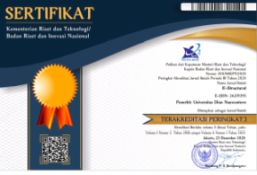The Language and Identity of Agueda in Nick Joaquin's May Day Eve: An Analysis of Linguistic Features and Stances
Abstract
Language is an important device in the construction of an individual’s identity. However, Language not only identifies any particular individual but also sets its position inside the society. As a form of social behavior, language like other social behaviors, also distinguishes gender differences. This study investigates the linguistic features and the personal identity of Agueda in Nick Joaquin’s May Day Eve. This study can be used to apprehend how women were influenced by the society and the culture of the Philippines during the 1800s. The researchers use Lakoff’s Theory of Linguistic Features, and the Indexicality Principle by Bucholtz and Hall (2005) to analyze the language and identity of Agueda. Qualitative Content Analysis and descriptive research design are used to analyze thoroughly the utterances of Agueda which consist of linguistic features and stances. Based on the linguistic features and the stances analyzed, Agueda uses emphatic stress more to show assertiveness through her utterances, she also uses disalignment more, and she likes to position herself along the affective scale. The result of the study shows that Agueda is an assertive and strong willed young woman, who likes to do whatever she wants. Her utterances also show how resentful she has become after her marriage with Badoy. The conclusion can be drawn that language is an important factor in creating an identity of a person, and this identity can be formed through the stances and linguistic features, which are greatly affected by the society, culture, and people that surround an individual.
Full Text:
PDFReferences
Ahmad (2014). Language and Gender Differences in Jordanian Spoken Arabic: A Sociolinguistics Perspective. Theory and Practice in Language Studies, 4(5) pp. 872-882.
Bamberg, M., De Fina, A. &Schriffin, D. (2011). Language and Identity Construction. In. S.J.
Du Bois, J. (2007). The Stance Triangle in R. Englebertson (Ed.), Stancetaking in Discourse: Subjectivity, Evaluation, Interaction. Amsterdam/Philadelphia: John Benjamins Publishing Company.
Fatmawati (2015). Mikhail’s Personal Identity Construction in Paulo Coelho’s The Zahir. NOBEL: Journal of Literature and Language Teaching, 6(2), 97-120.
Holmes, Janet. (2008). Introduction to Sociolinguistics (3rd Ed).Pearson Longman: New York.
Irvine, J.T. (2009). How Mr. Taylor Lost His Footing: Stance in a Colonial Encounter. In A.M.
Jaffe (Ed.), Stance: Sociolinguistic Perspective, (pp. 53-71). Oxford: Oxford University Press.
Khoirot, A. et al. (2016). Women’s Linguistic Features in Two Dramas. Nobel: Journal of Literature and Language Teaching, 7(1) 49-64.
Lakoff, R. (1975). Language and Woman's Place. Language in Society. Cambridge University Press, 2(1) 40-80.
Nafilaturif’ah. (2017). Katniss Everdeen’s Linguistic Features and Personal Identity Construction in Suzanne Collins’ The Hunger Games. Unpublished Undergraduate Thesis. English Department, Faculty of Arts and Humanities. The State Islamic University of SunanAmpel Surabaya.
Pan, Q. 2011. On the Features of Female Language in English. Theory and Practice in Language Studies, 1 (8): 1015-1018.
Wardhaugh, R. (1987). Languages in Competition: Dominance, Diversity, and Decline (The Language Library). Oxford: Blackwell Publisher: 978-0631157458.
Wildemuth B. & Zhang Y. (2015). Qualitative Analysis of Content. Analysis 1 (2):1-12 (2005)
DOI: https://doi.org/10.33633/es.v3i01.3524
Article Metrics
Abstract view : 1404 timesPDF - 1782 times
Refbacks
- There are currently no refbacks.
Accredited by:
Indexed by:
In Collaboration with:

This work is licensed under a Creative Commons Attribution 4.0 International License.

























